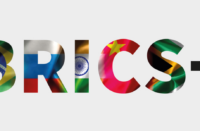Capitalism evolved from the development of trade: mercantile capitalism gave way to manufacturing capitalism which transformed into industrial capitalism after the industrial revolution, which was fueled by scientific inventions. The history of capitalism as a dominant mode of production begins in the 17th century, with Holland and England being the cradle for capitalism.
The growth of capitalism is tied to the growth of banks because capitalism cannot flourish without credit. The Bank of Amsterdam was formed in 1609. The first bank in England was formed in 1694. John Law founded the General Public Bank in France in 1716. In the city of London, there were 12 national banks in 1755, which increased to 150 in 1776 and became 400 in 1793. So the banks provided the capital and “enclosures” proletarianised rural people, providing the labour for capitalist expansion.
Industrial capital and banks combined to form finance capital, which has the mobility to reach any corner of the globe. According to Marx’s law of “the tendency of rate of profit to fall” in capitalist production, profit will eventually reduce over time, and therefore banks started making riskier investments for larger returns by speculative trading.
Recently, inflation posed a threat to the world economy, and the monetary policy solution was to hike interest rates. Many economists warned that this monetary policy wouldn’t reduce inflation but instead create “stagflation” (i.e. stagnant growth combined with inflation). As a manifestation of the crisis, Silicon Valley Bank (SVB) and Signature bank were in the news for the wrong reasons. Deposits in the banks were showing a decline due to recession. SVB had invested heavily in government bonds, but due to the government policy of hiking interest rates to control inflation, the value of bonds held by the banks depreciated drastically and the banks lost a lot of money. This set off a panic reaction amongst depositors who wanted to withdraw their money, which further put the banks under stress. Finally the US President Joe Biden, though unable to solve the crisis, had to make reassurances that public money was safe and some superficial reforms were to follow.
History shows that every crisis in capitalism is overcome by the further exploitation of workers. Twitter, Amazon and many major companies fired employees. One ramification of interest rate hikes to control inflation was that it reduced investments thereby increasing unemployment. Unemployment puts a downward pressure on wages because more people who lost work during the crisis then compete for fewer jobs. Workers are forced to work for lesser wages. The crisis at the end of 19th century was overcome by colonialism and the competition for more territories for exploiting which resulted in the First World War. The great depression of 1930 caused the rise of fascism which induced workers to further exploitation by violent attacks on trade unions and socialists.
It is against this background of the crisis of capitalism that we have to understand recent geopolitical events. The Ukraine war has given billions of public money to weapons manufacturers like Raytheon, Northrop Grumman, Boeing and Lockheed Martin. Seymour Hersh, the reputed journalist, said that the US, with the support of Norway, was behind the attacks on the Nordstream pipelines which supplied gas from Russia to Europe. These two countries were the beneficiaries who would supply gas to Europe if Russia were sanctioned. The US will now be selling gas to Europe at an much higher price which will cause further inflation in Europe. Inter-imperialist rivalry is evidenced by French President Emmanuel Macron saying, “Among the countries that support Ukraine, there are two categories in the gas market: those who are paying dearly and those who are selling at higher prices”. The war in Ukraine is aimed at bleeding Russia economically through prolonging the conflict by providing weapons to Ukraine, to strengthen the control over the European Union and provoke a cold war with China.
According to a recent report by ASPI (Australian Strategic Policy Institute), China is a leader in 37 out of 44 critical technologies. China has the labour power and power of technology to emerge as a global superpower and many countries are trying to move away from the US hegemony. China has also played a major role in the peace between Iran and Saudi Arabia which may end the terrible war in Yemen. China is also willing to negotiate between Ukraine and Russia, but the US and other imperial nations don’t want the war to end without achieving their ulterior motives. This is ample proof that imperialism needs war, because peace isn’t profitable.
The crisis management will intensify austerity measures which will further reduce social expenditure and increase war expenditure. The resulting unemployment and depreciation in wages along with cuts in social expenditure will put huge pressure on the working class in the west. When people protest against harsh living conditions, the ruling class will unleash the far right and implement draconian laws to subvert democracy (as we saw with the Public Order Bill in England recently).
The hegemony of the dollar as a currency for trading has declined, especially after the sanctions on Russia, and the value of Russian rouble has appreciated. Many countries are gradually overcoming the compulsion to hold dollar reserves for their imports and are dealing in their own currencies. We are witnessing an empire in decline: this is a point where imperialism is at its most dangerous. Hence working people around the world should unite to stop wars, and express solidarity with struggles forcing governments to spend on health, education, housing and green energy instead of depleting valuable resources on frivolous war to profit a few.





